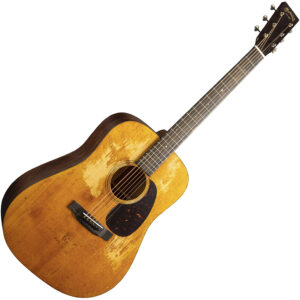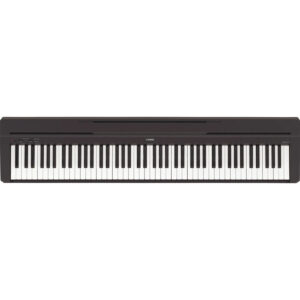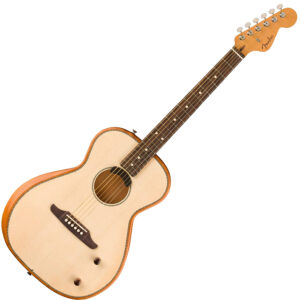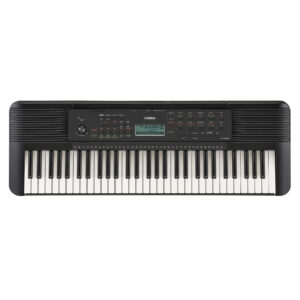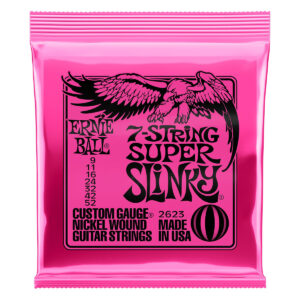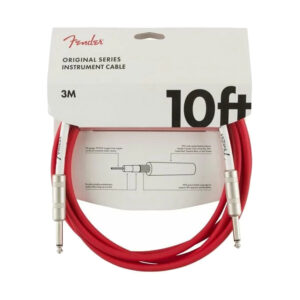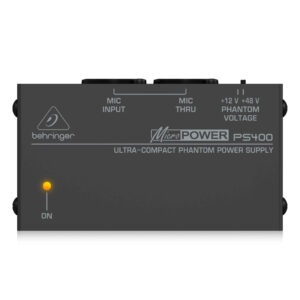
A BEGINNER’S GUIDE TO GUITAR EFFECTS
A BEGINNER’S GUIDE TO GUITAR EFFECTS
Learning to play the guitar is a great feeling; absorbing all you can and enjoying every minute. Inevitably, though, you find that something is missing. There are sounds you know you’ve heard— t hrilling sounds, strange sounds — and you want to know how to make them. Welcome to the wide and fascinating world of effects. Fortunately, aside from the funny names, almost all effects fit into just a few categories, and making a mistake when exploring effects is nearly impossible. Remember to use your ears to find what you like, and you’ll do just fine. Here, a painless overview of the first effects you’re likely to encounter on your musical journey:
DISTORTION
This is the effect every guitarist needs. Whether you’re into rock-style crunch, punk aggression, or full-on metal mayhem, distortion is the key to getting that sound. You can think of what people refer to as “distortion” as not just one effect, but also a group of similar sounding ones. All are different takes on the same idea: Overloading the electronic circuit to change a clean tone into a “dirty” one. Here are the three common types of distortion you will come across: 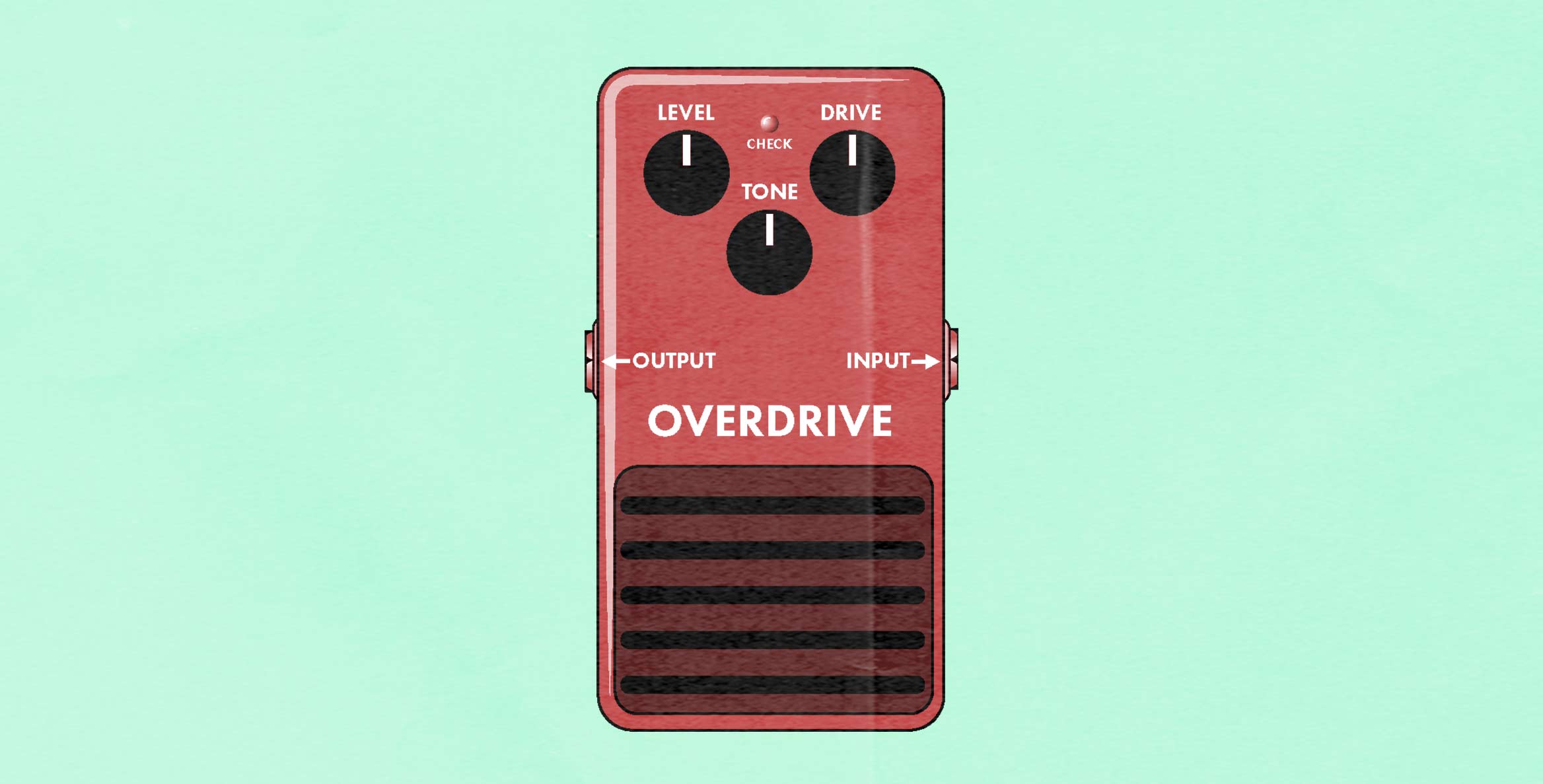
1. Overdrive
Simulates the effect of overloading a vacuum tube amplifier. This type of distortion when found in an effect pedal is usually pretty light compared to what we normally think of as a distortion sound. Usually with an overdrive we’re trying to achieve that “creamy” tone like Tom Petty, or Eric Clapton. These effects can be used before any amp, but are often used before tube amps to be able to boost the amp into further overdrive, making the effect even heavier. READ MORE: TUBES VS. DIGITAL: WHAT’S THE BEST AMP FOR YOU? 
2. Fuzz
This is the big, hairy, Jimi Hendrix and early Led Zeppelin sound. The sound of the 60’s. Fuzz effects can be anything from sharp and gated sounding (think the Rolling Stones’ “Satisfaction”), to a smooth but chaotic mass of distorted tone (like Hendrix’s “Foxey Lady”). Fuzz effects never really went out of style, but are enjoying an especially strong resurgence in recent years. 
3. Distortion
Distortion effects are designed to do one thing: Create massive amounts of gain for a more extreme effect than overdrive or fuzz. This is much more jagged and rough sounding than fuzz, but also tighter. A nice addition to all this is that the extreme gain allows for even greater sustain. Usually these effects will also have some tone shaping in the circuit to give the distortion a unique character. This is the sound of metal and hard rock for bands like Iron Maiden, Queens of the Stone Age and Foo Fighters. READ MORE: PLAY DIRTY: AN OVERVIEW OF OVERDRIVE, DISTORTION AND FUZZ
DELAY
 Delay is a well-loved effect that makes a copy of your signal and plays it back at a later time. This adds space and depth to your guitar sound. If you’ve ever clapped your hands in a hallway and heard that quick fluttering sound, that’s a short delay. Yelling into the Grand Canyon and hearing it back a second or so later is a long delay. It helps us emulate physical dimension. This effect is exemplified by players such as the Edge (U2) and David Gilmour (Pink Floyd). READ MORE: DELAY: A GUIDE TO MAKING THINGS HAPPEN LATER
Delay is a well-loved effect that makes a copy of your signal and plays it back at a later time. This adds space and depth to your guitar sound. If you’ve ever clapped your hands in a hallway and heard that quick fluttering sound, that’s a short delay. Yelling into the Grand Canyon and hearing it back a second or so later is a long delay. It helps us emulate physical dimension. This effect is exemplified by players such as the Edge (U2) and David Gilmour (Pink Floyd). READ MORE: DELAY: A GUIDE TO MAKING THINGS HAPPEN LATER
REVERB
 An effect no guitarist should be without. Like delay, reverb helps us emulate space and size. Instead of clear repeats of our signal though, we hear a longer wash of the sound. Ever clapped your hands or slammed a car door in a concrete parking garage just to hear the big long decay? That’s reverb! Listening to a guitar without reverb can sound unnatural, and even a little harsh. Just a small amount of reverb can add a nice amount of “polish” to your playing and give it that professional sound. READ MORE: EFFECTS GUIDE: WHAT IS REVERB?
An effect no guitarist should be without. Like delay, reverb helps us emulate space and size. Instead of clear repeats of our signal though, we hear a longer wash of the sound. Ever clapped your hands or slammed a car door in a concrete parking garage just to hear the big long decay? That’s reverb! Listening to a guitar without reverb can sound unnatural, and even a little harsh. Just a small amount of reverb can add a nice amount of “polish” to your playing and give it that professional sound. READ MORE: EFFECTS GUIDE: WHAT IS REVERB?
LOOPERS
 This is an amazing practice tool. Loopers allow you to record yourself playing, and loop it for endless accompaniment. You can record and loop a bass line to practice your rhythm chops, or loop the rhythm to practice your lead playing. That’s just the beginning of many more features that loopers allow you to control, and as you progress you will undoubtedly be able to integrate it into your own compositions. Here are a couple quick things to keep in mind when working with loopers: Frist, loopers will record anything that comes before them in the chain, keep that in mind as putting a reverb before a looper can make the loops more obvious, so reverbs and delays will usually be more helpful after the looper. Second, any type of distortion you will want before the looper, as you can set them for a nice crunch to make your rhythm loop, and crank the gain for a searing lead tone for your solos. READ MORE: EFFECTS GUIDE: LIVE LOOPERS
This is an amazing practice tool. Loopers allow you to record yourself playing, and loop it for endless accompaniment. You can record and loop a bass line to practice your rhythm chops, or loop the rhythm to practice your lead playing. That’s just the beginning of many more features that loopers allow you to control, and as you progress you will undoubtedly be able to integrate it into your own compositions. Here are a couple quick things to keep in mind when working with loopers: Frist, loopers will record anything that comes before them in the chain, keep that in mind as putting a reverb before a looper can make the loops more obvious, so reverbs and delays will usually be more helpful after the looper. Second, any type of distortion you will want before the looper, as you can set them for a nice crunch to make your rhythm loop, and crank the gain for a searing lead tone for your solos. READ MORE: EFFECTS GUIDE: LIVE LOOPERS
CONCLUSION
Of course, there’s a whole world of effects pedals to compliment your setup and let you attain these sounds. (You can check out Fender’s full line of effects pedals here). And there are amps like the Mustang GT Series and Rumble Series that put a number of effects at your fingertips in one convenient package. Getting into the world of effects can seem confusing at first, but just remember that they are all just variations of the same type of effects. Use your ears to find what you like, and you’ll do just fine. The effects described above are used by newcomers and professionals alike and will serve you well throughout your progression as a player.






















